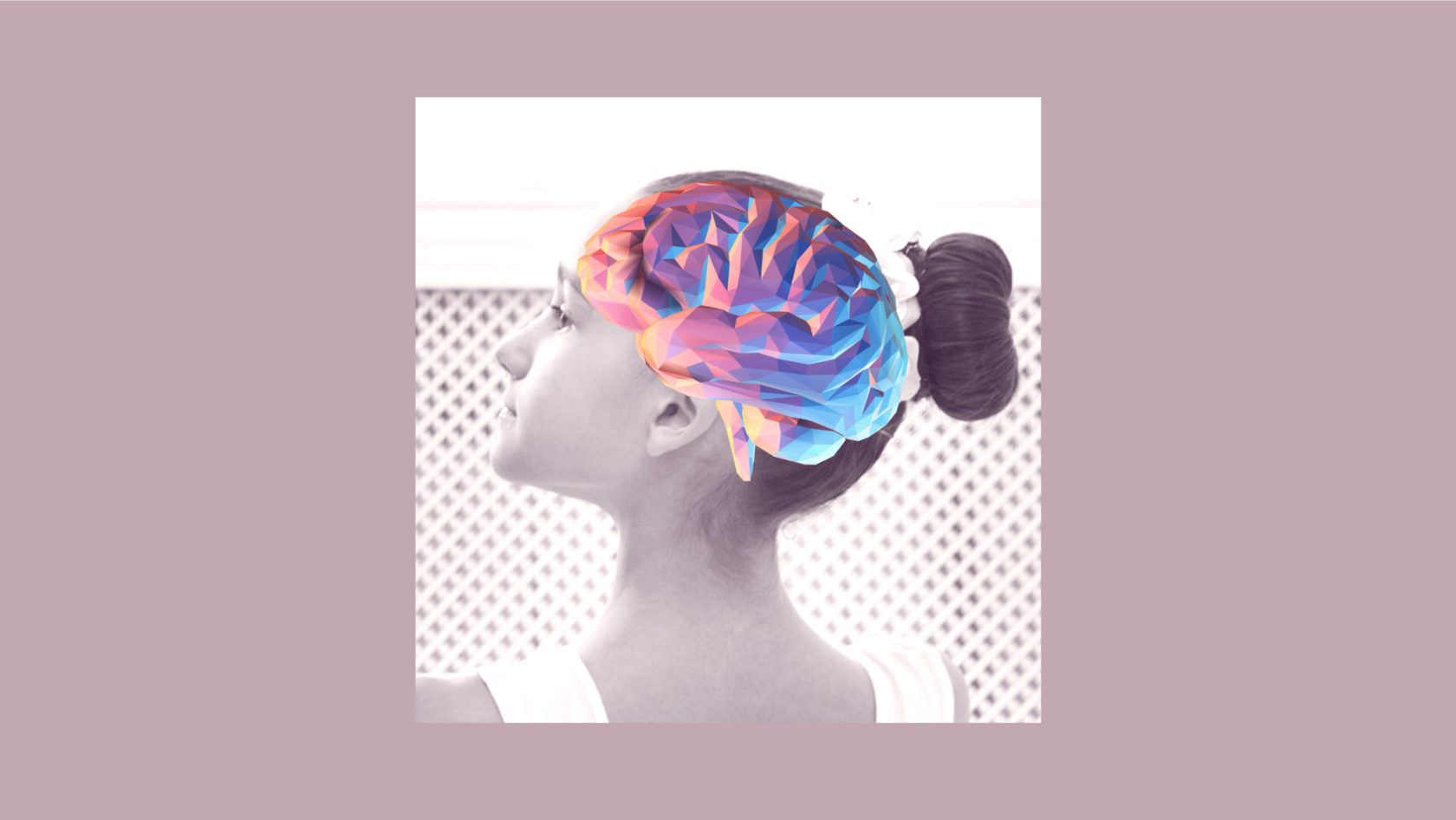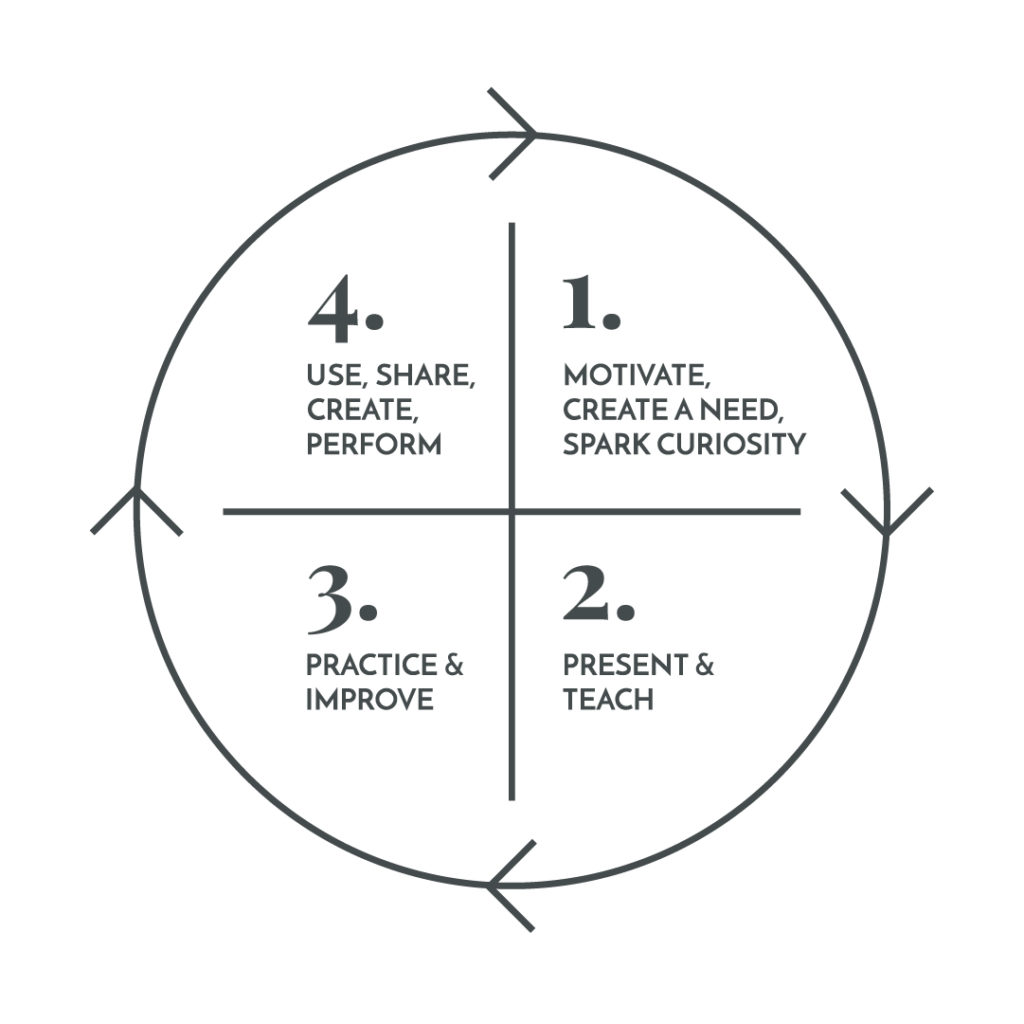If students are not retaining the new skills we teach them, it could be because we as teachers are not honoring their natural flow of learning. Learning new skills follows a logical pattern, and we have to address the “why” and “how” of a new step in order to ignite our students’ passion and desire for learning it.
Ruth Brinkerhoff has a great tool for doing this, which she calls the “Teaching Wheel.” Following the quadrants of this wheel will help your students successfully learn and retain new skills and choreography.
1st Quadrant: Motivation and Priming
When presenting new ideas or movement skills, use words and techniques designed to arouse curiosity in the students. Give them a reason to want to know what you are planning to teach.
Think of unexpected ways to introduce things, arouse interest in them, and motivate them to want to learn something new. Arouse a feeling in them that they need to learn this, and tap into their desire to progress.
Here are some fun ways to motivate and prime your students:
- Give them a puzzle to solve.
- Do or say something unexpected.
- Explain how they can use this new skill.
2nd Quadrant: Presentation Counts!
This is both presenting and teaching the skill. Use demonstration, explanation, and imagery. Relate the new skill to things they can already do. Employ a variety of approaches to keep them interested and engaged in the lesson. Remember to:
- Use words they can understand.
- Demonstrate at their level of ability, not above it.
- Break down complex learnings: teach one idea at a time, and then combine it into the complete whole.
- Relate it to something the students are familiar with or can already do.
3rd Quadrant: Practice Is Part of Learning and Improving
Make sure that your students have plenty of guided practice in class, where you’re there to correct any mistakes. Lead them through the new skill or concept carefully, and add music as soon as they can do the skill. Practice in class until the skill is easy for them to do.
Only assign or encourage independent practice at home after the students are able to reproduce the skill correctly on their own. From that point on, independent practice at home will strengthen the skill and make it more permanent. Errors are part of learning, but not part of perfecting!
4th Quadrant: Application, Sharing, Using the Skill, Creating, Performing
In dance, we use familiar skills, steps, and movements to create fun enchaînements for class, creative dance stories, and dances to perform. This is the final quadrant of the teaching wheel, wherein students can apply their new skill by:
- Performing it for Mom, Dad, Grandma, Teacher, or the class.
- Combining it with another step to make an enchaînement.
- Creating a dance story with it.
- Teaching it to someone else.
- Explaining it to someone who doesn’t dance.
The Teaching Wheel Keeps Turning
Each quadrant of the wheel is at play somewhere in every lesson of a dance class. That’s because there are always some skills ready to be used, some ready for independent practice, some still needing guided practice, some still needing more teaching, and new ones that the class needs to be motivated toward learning.
Once you get the idea of going around and around the wheel, you will see that there will be activities in every lesson that fit into each of the four quadrants. The process of going around the wheel in teaching a skill or an idea will take at least four lessons, usually more.
Using the Teaching Wheel to Engage Both Sides of the Brain
Next, you need to think about how you can reach both sides of your students’ brains in each quadrant. The right brain likes feelings, expressions, imagery, and the freedom to create, move, perform, and try new things. The left brain likes facts, logical reasons for things, explanations, names for steps, specific ways to do the step, and understanding new things before trying them.
It’s best if you don’t really know which kids prefer learning with which side. This may change as they grow, and for adults to always think of a child as a “right-brained” or “left-brained” person may ultimately be too limiting for the individual child’s full development.
Research shows that most of us use both sides of the brain in nearly everything we do anyway, so try to reach both the right and left brain of the class as a whole. Use words, demonstrations, imagination, and other presentation devices in all four quadrants. Cover both sides of the brain—thinking (left) and feeling (right)—with everything you teach.
You will find that you’ll tend to forget to use and communicate with the side of the brain that is not your favorite means of expression! You will need to put the items needed for the “other side” into your plans, and be sure to use them. With practice, this teaching skill will become easier for you.
Related Articles:



Comments
No comments for this post.
Add Comment